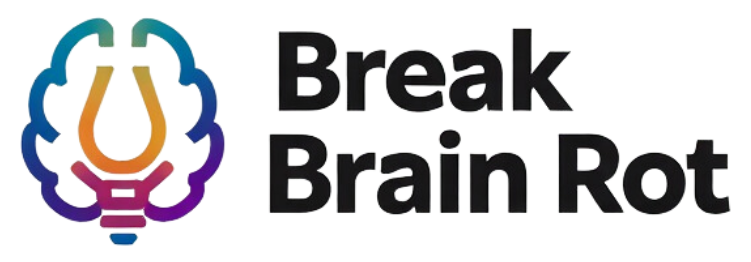Table of Contents
- Why a Digital Detox Matters
- Steps to Create Your Personal Digital Detox Plan
- Tools and Techniques to Support Your Detox
- Overcoming Common Challenges
- Long-Term Benefits of a Digital Detox Plan
- FAQs
- Conclusion
Why a Digital Detox Matters
Our relationship with technology is complex. While it improves our productivity and keeps us connected, constant exposure has downsides.
Understanding the impact of digital overload on health
Excessive screen time is linked to eye strain, poor sleep patterns, and even musculoskeletal problems. Mentally, it can leave you feeling drained, distracted, and unable to relax fully.
The role of technology in stress, anxiety, and concentration loss
Studies from organizations like the Mayo Clinic show that constant digital absorption raises cortisol levels and negatively impacts mental focus. This leads to higher stress, shorter attention spans, and even symptoms of anxiety.
Signs you need a personal digital detox plan
- You feel restless without your phone.
- You constantly multitask between apps, chats, and work tools.
- Your sleep, productivity, or mood is affected by late-night scrolling.
For more detailed red flags, check out our guide on Signs of Digital Burnout.

Steps to Create Your Personal Digital Detox Plan
Define your digital habits and triggers
Start by tracking how much time you spend on different devices and apps. Awareness is the first step to change. Document the situations where you rely most on screens—like boredom, stress, or procrastination.
Set realistic goals for screen time reduction
Don’t aim for a total digital blackout at once. Instead, set gradual targets, like reducing social media by 30 minutes daily or turning off work emails after dinner. Small, achievable goals build lasting momentum.
Schedule device-free breaks and downtime
Integrate intentional breaks where screens are off-limits—morning routines without phones, family dinners device-free, or a weekend day unplugged. For tips on making the most of this time, see our resource on Time Management Strategies.
Tools and Techniques to Support Your Detox
Apps to monitor and limit screen time
Ironically, technology can help you control technology. Use apps like Freedom, RescueTime, or built-in phone settings to track usage and set app limits.
Mindfulness practices and offline hobbies
Replace scrolling with mindful activities: meditation, journaling, reading, or creative hobbies. The American Psychological Association highlights mindfulness as a proven method for reducing stress caused by digital overload. For beginners, we recommend our guide on Mindfulness Practices.
Digital-free zones in your home or workplace
Create boundaries by designating no-tech areas like the bedroom or dining table. This encourages real interaction and healthier routines.
Overcoming Common Challenges
Dealing with FOMO (Fear of Missing Out)
Fear of missing updates often undermines detox plans. Combat this by scheduling specific check-in times instead of constant refreshing.
Managing work responsibilities without constant connectivity
Set expectations with colleagues by communicating clear availability times. Turn off notifications outside work hours whenever possible. To better balance demands, see our Work-Life Balance Tips.
Social strategies: setting healthy digital boundaries
If friends or family expect instant replies, kindly explain your detox goals. Encourage shared device-free activities for mutual accountability.
Long-Term Benefits of a Digital Detox Plan
Improved focus and productivity
When constant interruptions are removed, you reclaim deep, intentional focus—leading to better quality work and efficiency.
Better mental health and emotional wellbeing
Detaching from overstimulating digital input reduces anxiety, improves mindfulness, and supports a calmer state of mind.
Stronger relationships and more meaningful connections
By being present with family, friends, and colleagues, your bonds become deeper and more authentic. According to Harvard Health, intentional disconnection strengthens emotional wellbeing and enhances connection quality.
Frequently Asked Questions
What is a digital detox plan and how does it work?
A digital detox plan is a structured strategy to reduce unnecessary screen time and promote mindful technology use. It works by setting boundaries, scheduling breaks, and replacing digital habits with healthier alternatives.
How long should a personal digital detox last?
The duration varies. Some choose a weekend reset every month, while others commit to daily device-free blocks or longer detox challenges.
Can I still use technology for work while doing a digital detox?
Yes. The goal isn’t to eliminate technology completely but to avoid unnecessary or unhealthy usage. Essential work tasks can remain while personal overuse is minimized.
What happens if I relapse into old habits?
That’s normal. Instead of aiming for perfection, focus on progress. Restart with smaller goals and gradually rebuild consistency.
How do I encourage my family to join me in a digital detox?
Involve them by proposing device-free dinners, game nights, or weekend activities. Framing it as quality time can make it exciting and collaborative.
Conclusion
In today’s hyper-connected world, a personal digital detox plan empowers you to regain focus, reduce stress, and reconnect with what truly matters. You don’t need to disconnect completely—even small steps, like setting screen time limits or designating phone-free zones, can have a massive impact over time. Starting today, take the first step toward balance, mindfulness, and better mental clarity. Your future self will thank you.

